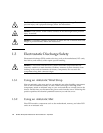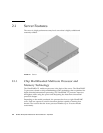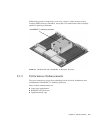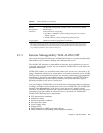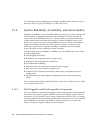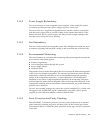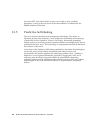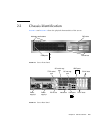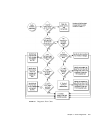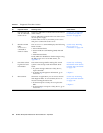
Chapter 2 Server Overview 2-7
2.1.4.2 Power Supply Redundancy
The server features two hot-swappable power supplies, which enable the system
to continue operating should a power supply or power sources fail.
The server also has a single hot-swappable blower unit that works in conjunction
with the power supply fans to provide cooling for the internal hard drives. If the
blower unit fails, the two power supply fan units provide enough cooling for the
hard drive bay to keep the server running.
2.1.4.3 Fan Redundancy
The server features three hot-swappable system fans. Multiple fans enable the server
to continue operating with adequate cooling in the event that one of the fans fails.
2.1.4.4 Environmental Monitoring
The server features an environmental monitoring subsystem designed to protect the
server and its components against:
■ Extreme temperatures
■ Lack of adequate airflow through the system
■ Power supply failures
■ Hardware faults
Temperature sensors located throughout the server monitor the ambient temperature
of the server and internal components. The software and hardware ensure that the
temperatures within the enclosure do not exceed predetermined safe operating
ranges. If the temperature observed by a sensor falls below a low-temperature
threshold or rises above a high-temperature threshold, the monitoring subsystem
software lights the amber Service Required LEDs on the front and back panel. If the
temperature condition persists and reaches a critical threshold, the system initiates a
graceful server shutdown.
All error and warning messages are sent to the system controller (SC), console, and
are logged in the ALOM CMT log file. Additionally, some FRUs such as power
supplies provide LEDs that indicate a failure within the FRU.
2.1.4.5 Error Correction and Parity Checking
The UltraSPARC T1 multicore processor provides parity protection on its internal
cache memories, including tag parity and data parity on the D-cache and I-cache.
The internal 3 Mbyte L2 cache has parity protection on the tags, and ECC protection
of the data.




